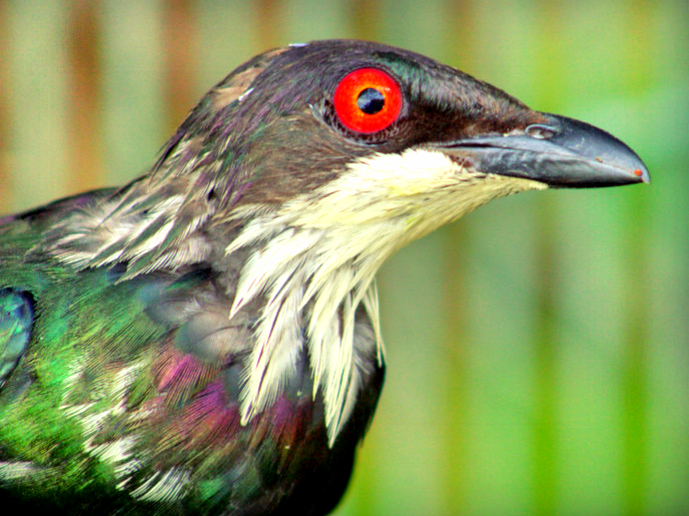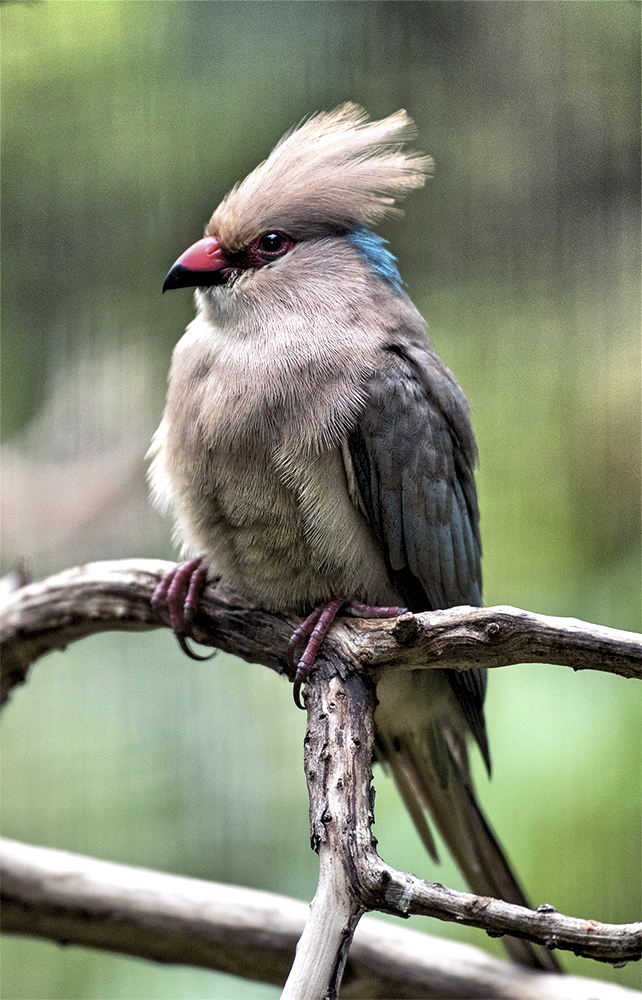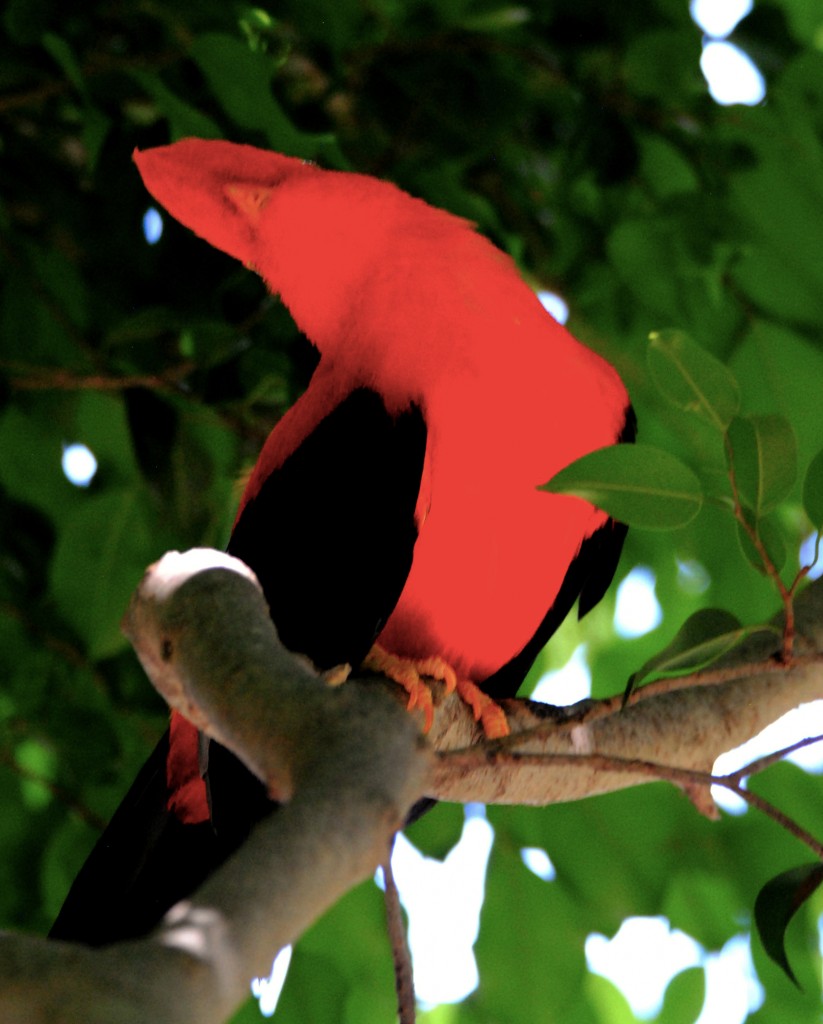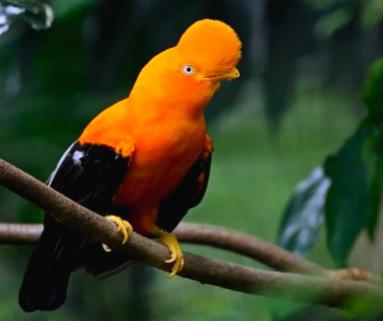

The Metallic Starling is also known as the Shining Starling. It is native to New Guinea and the Australasian islands and northeastern Australia.
Male adult Metallic Starlings have a glossy green-black plumage that is iridescent. They have a long tail and red eyes. Females and immatures Metallic Starling have a dark streaked whitish body with dark wings and head.

Mousebirds, or colies, are African birds that got their name because their hopping movements combined with their grey coloring is mouse-like. There are six species of mousebirds in a family (Coliidae) and order (Coliiformes) all by themselves. These unique birds are about the size of a cockatiel with long, stiff, pointed tails and small head crests that can be raised at will. Their plumage is very soft, and their feet quite large.

Peacocks are large, colorful pheasants (typically blue and green) known for their iridescent tails. These tail feathers, or coverts, spread out in a distinctive train that is more than 60 percent of the bird’s total body length and boast colorful “eye” markings of blue, gold, red, and other hues.
The term “peacock” is commonly used to refer to birds of both sexes. Technically, only males are peacocks. Females are peahens, and together, they are called peafowl.

The spectacularly bizarre Andean Cock-of-the-rock is perhaps the most popularly recognized bird of the cloud forests of the Andes Mountains. The national bird of Peru, this species is readily identified by its fan-shaped crest and brilliant orange plumage, both of which are evident to a lesser degree even in the duller female. Males spend much of their time displaying at leks, where they jump up and down on particular branches and utter low, guttural croaks. The name is derived from their preference for rocks and ledges as substrates for their mud cup nests.
Comments
Powered by Facebook Comments

